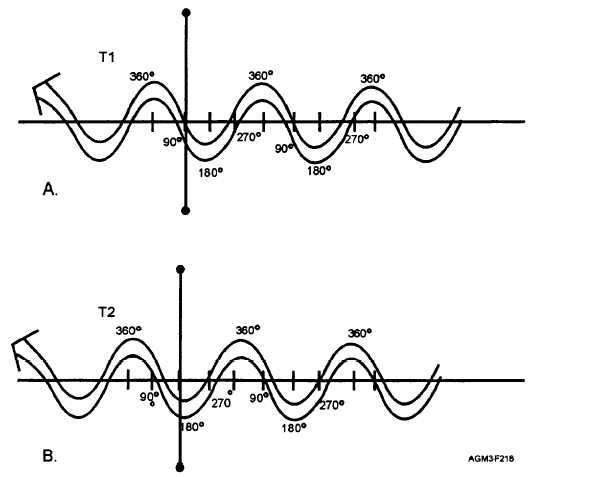frequency shift, giving the motion and speed of the
target.
While frequency of electromagnetic energy is
modified by moving targets, the change is usually too
slight to measure precisely. Therefore, Doppler radar
focuses on the phase of electromagnetic energy, as this
aspect experiences a greater degree of displacement
and increases the likelihood of detecting motion.
Using phase shifts instead of frequency changes can be
compared to viewing an insect under a magnifying
glass. Features that might otherwise go unseen take on
a new dimension and become observable.
PHASE SHIFT
The phase of a wave is a specific point or
benchmark along that wave. A phase shift is an
observable repositioning of this benchmark between
successive transmissions. A pulse Doppler radar, in its
simplest form, provides a reference signal by which
changes in the frequency phase of successively
received pulses may be recognized. The known phase
of the transmitted signal allows measurement of the
phase of the received signal. The Doppler shift
associated with the echo from which the return
originated is calculated from the time rate of change of
phase.
The phase of a wave, measured in degrees, where
360 degrees equals one wavelength, indicates the
current position of the wave relative to a reference
position. For example, look at figure 2-18. At time T1
(fig. 2-18, view A), the position of the wave along the
vertical line was as shown, while at time T2 (fig. 2-18,
view B), the position of the wave along the vertical line
was as shown. Notice that the wavelength did not
change from T1 to T2. However, the wave’s position
relative to the vertical line changed 1/4 wavelength, or
90 degrees. This change is the phase shift.
Figure 2-18.—Wavelengths and phase shifts. (A) T-l is wave reference position. (B) T-2 wave’s position has changed 90° from
reference position (T-l).
2-17


